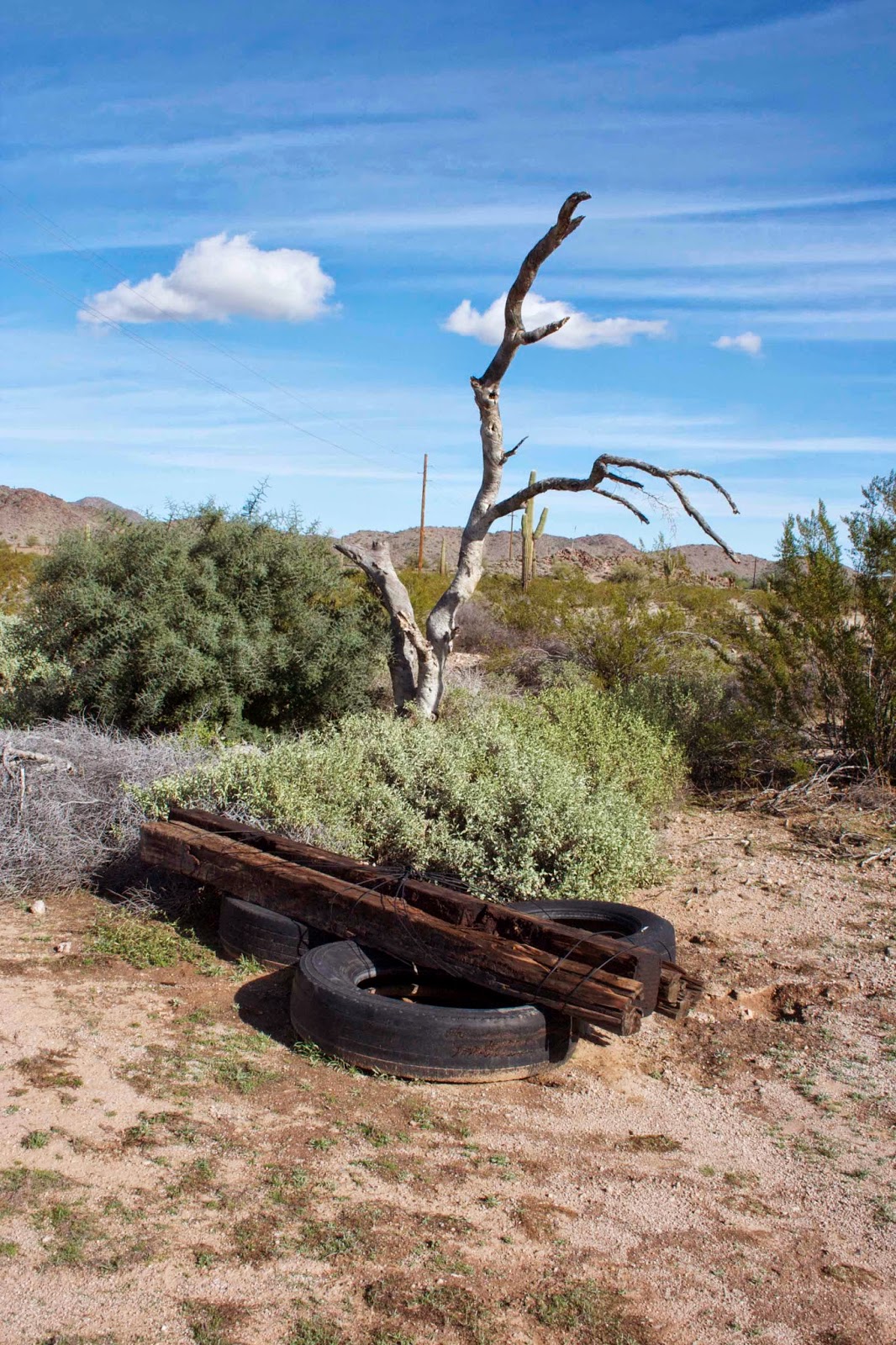Above is a photograph of our scribe walking in Arizona, in the Sonoran desert
last month. Actually the area is designated the Sonoran Desert National
Monument, though it doesn’t look very different from a lot of nearby territory that
isn’t designated. The best thing about
the Sonoran desert, and about much of Arizona, is the presence of saguaros, the
archetypical, anthropomorphic cacti.
As I walked I had some idea of finding the perfect saguaro specimen,
the most human, the one with arms posed most convincingly at its sides. This wasn’t so easy. I’d see one in the middle distance and I’d
walk towards it but I’d soon see it wasn’t quite the archetype I was looking
for, the angles of the arms would be wrong, or what looked like a two-armed
cactus from a distanace turned out to have an extra arm when I got closer. But then I’d see another, apparently more
perfect one, not so far away and I’d walk towards that one, and it too would
let me down, and then I’d see another … and so on.
There were other imperfections too.
The chances of finding a saguaro in anything like perfect condition,
without scars or wounds or dead patches, was very, very low. But you know that made them kind of human as
well: just like people they get beaten up and damaged by the years, by what we
might as well call nature.
And another thing I like about the Arizona desert, actually about deserts
in general: the long, long, multi-engined freight trains. As you’ll find if you walk right up to the
tracks, and certainly there’s nothing to stop you walking right up to the
tracks, these are vast, thunderous, threatening things, but when you see one of
them in the distance, snaking its way through the landscape it seems positively
serene.
I was not on a very adventurous walk – I just strolled around for an
hour or two, with no end in mind beyond looking at trains and cacti, but as I was
heading back to the car I saw this thing:
Tires, chunks of wood, some kind of cord holding it all together: it
would be easy to see it as random detritus, or even (at a pinch) desert folk
art but in fact I happened to know what it was because I’d read an article a
couple of weeks in California Sunday Magazine.
The device was almost certainly used in the process of “cutting for
sign,” a tracking method and an old Native American trick. You smooth out the dirt road with tires (the
Native Americans didn’t have these, of course) and then if anybody walks there
you’ll know about it.
I assumed the Border Patrol had been involved, tracking illegal
immigrants, although also desert flaneurs like me. It also occurred to me that we were some
fifty miles from the Mexican border, which seemed a bit late in the journey to
start tracking anybody. But of course
the walking was the end of the journey, the walkers had made it this far by
riding the freight trains.
























.png)


